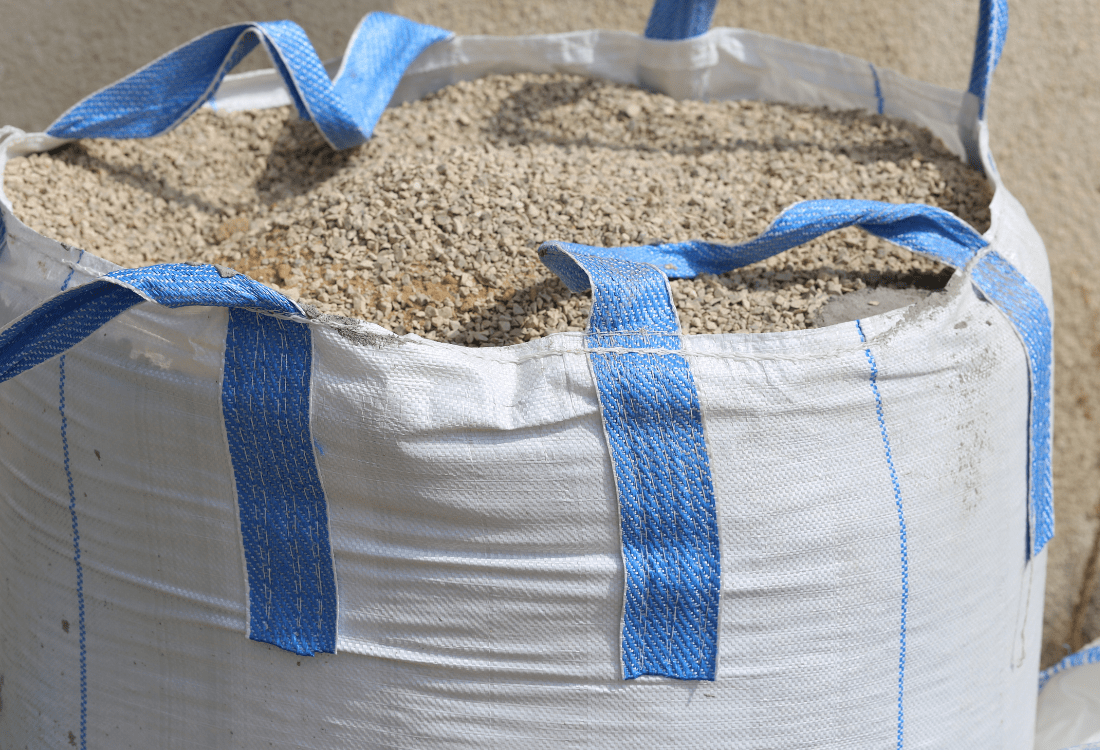
Multi Trip FIBCs: How Builders Materials Impact Reusable Bulk Bags
Flexible Intermediate Bulk Containers (FIBCs), often referred to as builders’ bags, are an essential tool for transporting heavy materials on construction sites. While many FIBCs are intended for single use, certain bags are specifically engineered for multiple reuses, offering long-term cost efficiency and reduced environmental impact. This article explores how to determine whether a bulk bag is reusable and the factors that affect its suitability over time.
Is My FIBC a Reusable Bulk Bag?
Not all bulk bags are reusable. The key indicator is the bag’s Safety Factor (SF), which reflects its tested strength relative to its Safe Working Load (SWL). An FIBC marked SF 6:1 is certified for multiple uses under correct handling conditions, while SF 5:1 bags are designed for single use only and should not be reused.
However, the presence of an SF 6:1 rating does not automatically mean a bag is safe to reuse. You must also assess:
- The Safe Working Load (SWL) is printed on the bag label.
- The condition of the bag, including seams, fabric, and lifting loops.
- The type of material previously transported may impact reuse suitability.
Reusable FIBCs should be used to carry the same or similar materials and must pass a thorough inspection prior to each reuse.
Understanding Safe Working Load and Safety Factor
Every FIBC includes a Safe Working Load (SWL) that defines the maximum weight it is rated to carry. While bags with an SF 6:1 rating are tested to withstand six times their SWL under controlled conditions, this is purely for certification purposes. In practice, the SWL must never be exceeded.
A common misconception is that the Safety Factor represents a working tolerance. In reality, exceeding the SWL—even once—can compromise the bag’s integrity and pose serious safety risks to operators and the public.
Can You Reuse a Damaged Bag?
No. Bags used in the construction industry are exposed to significant wear and stress during transport and handling. Any signs of damage, such as weak seams, abrasions, or punctures, render a bag unsuitable for reuse. Reusing a compromised bag can result in product loss, contamination, injury, or structural failure.
Damaged FIBCs should be responsibly recycled through appropriate recovery channels. Recycling supports environmental goals and helps reduce long-term disposal costs.
Material Handling Best Practices
To maintain safety and product quality, reusable FIBCs should not be used to transport different types of materials. For example, switching a bag from cement to sand can result in:
- Residual contamination
- Compromised bag structure due to prior contents
- Inconsistent product weight or composition
Where possible, keep bags dedicated to one material type, and label or track them accordingly.
Reusable Bulk Bags From Cliffe Packaging
For guidance on identifying and using reusable bulk bags safely, download our free Bulk Bags Guide. It contains details on FIBC classifications, load capacities, compliance regulations, and inspection tips. If you’d like expert advice tailored to your application, please either send us a message or call us on 0845 481 1200.
Image Source: Canva


